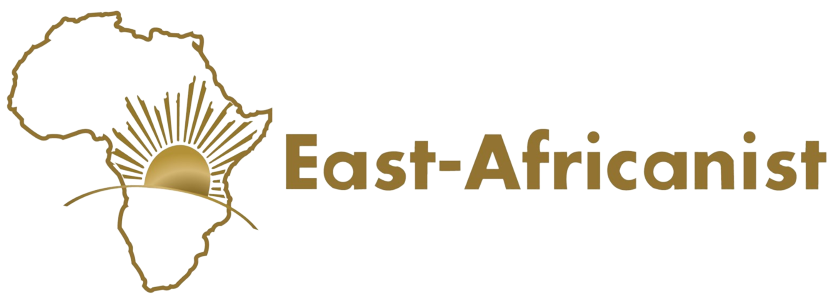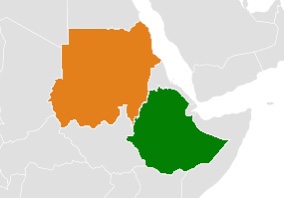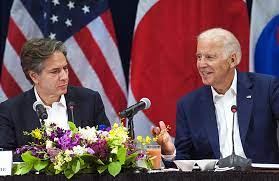By: Messay Kebede (Ph.D.)
Author’s note: This short paper is a philosophical rather than legal review of the Ethiopian Constitution from the vantage point of Article 39.
Introduction
If you add or put together distinct objects, you will not obtain an organic unity. The object is mechanically assembled as a result of a movement that goes from the parts to the center. The procedure is typical of a manufacturing act and the unity that is obtained is artificial, human-made. This is how you manufacture a watch, a car, or a house. By contrast, an organic unity proceeds from unity, which is then differentiated internally into constituent parts. When a plant grows, it does not add parts; the growth is simply a differentiation of the seed. The movement produces a living unity in which component parts interact in such a way that they preserve the integrity of the whole, which integrity provides, in turn, lifeblood to the parts. In complementing one another for the good of the whole, the parts alienates their independent existence in favor of a collective life.
If one definitive characterization can be said about the Ethiopian Constitution of 1994 is that it did not follow the model of organic unity. Indeed, it opens with the statement, “We, the Nations, Nationalities and Peoples of Ethiopia,” which statement is by any measure far removed from prioritizing unity. The fact that distinct and independent entities constitute the point of departure naturally entails that the goal of their gathering is the “building a political community founded on the rule of law and capable of ensuring a lasting peace, guaranteeing a democratic order, and advancing our economic and social development.” Clearly, a political community thus obtained is nothing but the sum of the original units, which are therefore the truly sovereign and founding entities. Moreover, these sovereign entities commit to unity only under the condition that it serves their interests while themselves having no obligations toward the larger unity. No provision requiring the surrender of whole or part of their sovereignty is set for them as a condition of their membership in the larger community.
The proof of this one-sided commitment is none other than Article 39 of the constitution, which grants “an unconditional right to self-determination, including the right to secession” to every ethnic groups. The unconditionality of the right attests that there is no reciprocity between the larger national community and the sovereign ethnic entities. The fact that ethnic groups can secede without the consent of the union means that the union is a mere gathering of distinct entities, and not an organic unity in which parts and whole benefit one another because they are tied by mutual obligations.
Consent and Nation-Building
Since a major distinguishing feature of the 1994 constitution from previous ones is to ground what has been created by the imperial southern expansion on the consent of the conquered, it would be quite instructive to reexamine it in light of the theory that made consent into the cornerstone of all political associations, to wit, the contract theory. Just as the contract theory derives political power from the consent of the governed, so too the Ethiopian Constitution originates the power and authority of the federal system from the agreement of nations and nationalities that it comprises. Unsurprisingly, their similarity compels both to face the same thorny question of the durability of political systems based on consent. Where there is contract, agreement, there is the possibility of breakup: it is this possibility that the Ethiopian Constitution acknowledges through the recognition of the right to secede.
The theoreticians of contract theory were fully aware that the idea of consent, which is in complete sync with the idea of freedom, could not generate a union that would be irrevocable, just as they knew that a union that fails to be binding could neither be durable nor functional enough to sustain the legitimacy of political power and authority. Hence the idea that the social contract must postulate a binding union: unlike any ordinary contract in which the contractors remain distinct, the social union produces one body, or to put it in Locke’s terms, it rests on “the agreement which every one has with the rest to incorporate and act as one body, and so be one distinct commonwealth.” The fact that the contract creates one body, and not a mere gathering of distinct parts, means that the union transcends the parts, and so rises to full and undivided sovereignty. Developing further his idea, Locke adds that the society acts as one body “only by the will and determination of the majority,” for the obvious reason that a truly united body is unable to split so that any division has nowhere to go except in the direction imparted by the greater force.
The irreversible nature of the social contract is even more forcefully upheld by Hobbes and Rousseau. For the former, the agreement reached by the contractors postulates that they confer “all their power and strength upon one man, or upon one assembly of men,” the expectation being that the institution of an absolute, unchallenged power will turn the consent of the members into a “real unity of them all, in one and the same person.” The monopoly of all power by one man, what else could it entail but the tight unification of the society under one will? As to Rousseau, the unifying forces is not so much the empowered individual as the general will, which is the collective being generated by the contract and is always operating under the imperative of the common good. To quote Rousseau, “Each of us puts his person and all his power in common under the supreme direction of the general will, and, in our corporate capacity, we receive each member as an indivisible part of the whole.” To the extent that the general will excludes all particularisms, it unifies the society under a collective will and, in so doing, ensures that no individual has power over another individual. In other words, the general will is the complete fusion (instead of being a mere sum) of all individuals wills into one, impersonal, and transcendent will.
Ethiopia’s Conditional Union
To lay consent on a firm ground, the three thinkers appealed to the supreme power of an individual, of a collective being, or of majority vote. The whole idea is that consent produces a stable and working political community only when it engenders a sovereign power that transcends it. Such is not the manner the Ethiopian Constitution framed the federal system. Not only does it start from the multiple sovereignties of nations and nationalities, but it also underlines that “all sovereign power resides in the Nations, Nationalities and Peoples of Ethiopia.” There is no any transfer of sovereignty from nations and nationalities to federal instances. The parliament does not constitute a collective being, in the sense of Rousseau, nor does it operate as one body, as Locked stipulated, being but a mere collection of distinct entities. Still less is the Chief Executive, the Prime Minister, holder of a supreme will, in the Hobbesian sense of the word, as he or she is responsible to a sectionalized parliamentary institution.
No wonder that the late Prime Minister, Meles Zenawi, had to go out of the constitution and resort to dictatorial methods to protect his power and prevent the country from falling apart. Equally unsurprising is the fact that the refusal to generate a collective being, a general will by transcending ethnic distinctions turns any officeholder, including the Prime Minister, into a representative of an ethnic group. The consequence is that the officeholder does not see people as citizens, but as members of ethnic groups with unequal standing in relation to members of his/her own ethnic group. Inversely, people who belong to different ethnic groups than the officeholder see their relations with him/her as one of subordination. It is of no use to try to create an impression of equality through a fair distribution of governmental offices: inasmuch as the offices are not impersonalized, that is, de-ethnicized in the case of Ethiopia, the impression of unequal relations will remain. The attempt to erect a federal system that would be representative of all Ethiopians regardless of race, ethnicity, or religion is flawed so long as the system is made unable to transcend the ethnic constituencies.
The paradox of the Ethiopian Constitution is that it recognizes the unconditional right to secede as a constitutional right but does nothing to make it really constitutional. It would become constitutional if it were stated that any secession would require an agreement between the seceding party and the rest of the society. Such a clause would remove the qualification of “unconditional,” since it admits that, without the agreement of all ethnic communities, which originated the federal system in the first place, secession is but a unilateral act; as such, it is political rather than constitutional. To argue that the right to secede is prior or concurrent to the original agreement is to admit that the constitution was framed with the express intention of preventing a complete union. If the social union is not binding, it is difficult to see how any law in the constitution or derived from it can become binding. To refer to an ongoing crisis, in refusing to obey the federal government, what else is the TPLF invoking but the inalienable sovereignty of the Tigrean community?
The provision of a conditional union throws suspicion, to say the least, on the truly democratic intention of the framers of the constitution. In a complete, unbreakable union, social ills, such as inequality, injustice, lack of freedom, can only be removed through democratic changes, under pain of going through constant protests, rebellions, and revolutions. In a mere gathering that grants the right to secede, however, the easy solution is to leave the association. A person who has nowhere to go has no other choice than to work to improve the conditions of existence. In the same way, in an irrevocable union, there is no other way out than to buckle down to the work of improving the common house for everybody. When the social tie is indissoluble, there grows the sense of a common destiny.
Ethnicity and Unity
To be sure, the parallel between the Ethiopian Constitution and the contract theory, no doubt justified, overlooks one major differentiating factor, which is that the contract theoreticians dealt with individuals, not with ethnic communities. Since an ethnic community defines itself in opposition to other communities, its particular attributes in terms of customs, language, religion, etc., do not lend themselves to a fusion into a homogenous national identity. In the case of individuals, union means that they lose their natural freedom in favor of civil liberty, that is, in favor of freedom protected by laws. In the case of ethnicity, union amounts to a replacement of the differentiating identity by another homogenizing identity of citizenship. This largely explains the resistance of ethnicity to national integration, all the more so as the so-called integration is often nothing more than the imposition, as was the case of Ethiopia, of the dominant culture of the conquering group, with all the attendant consequences in terms of unequal treatment of conquered ethnic groups.
The above plights of dominated groups explain why, short of forceful secession, the integration of ethnic groups into a national community has required a different type of union, the very one that includes and promotes multiculturalism within a national state. Other than Ethiopia, we can cite Canada, Belgium, Switzerland, and India as examples of countries that engaged in the path of combining unity with ethnic diversity. In fact, while Canada and Belgium are cited as examples of national integration with lingering issues, Switzerland and India are praised for their successful merger of unity with diversity. By contrast, the former Soviet Union, which had accorded, as is now the case in Ethiopia, to every republic in the union “the right freely to secede from the U.S.S.R” is typified as the model of failed integration. Hence the fear of many Ethiopians that the inclusion of the right to secede in the constitution will put Ethiopia in the same path of failure as the Soviet Union.
Obviously, the burning question here is the question of knowing how Switzerland and India successfully accomplished the miracle of marrying diversity with unity. Serious studies attribute the Indian success to the early commitment to both unity and diversity of the Indian National Congress party. In its slow move toward independence, the party, which was mostly composed of Indian elites and educated middle classes, did not engage in the project of homogenizing India’s linguistic and religious diversity. Instead, it fully embraced India’s pluralism, the consequence of which was that the party itself became multi-ethnic while being perfectly united. Thank to this unity in pluralism of the party, ethnicity did not rise to the level of being politicized. Rather, diversity became the democratic right that all Indians enjoy on account of their unity. As to Switzerland, a development similar to India took place resulting in the emergence of a trans-ethnic elite, which emergence seriously hindered the rise of single language-based parties of any significance. Interestingly, the Swiss case provides a perfect example of diversity as a democratic derivation from the primacy of unity. Indeed, it is only much later to the formation of the nation that the political decision was taken to allow all regions and linguistic groups to self-govern through the implementation of adequate representations.
It springs to mind that the key to success in both cases was that they went from the assertion of unity to diversity, and not the other way round of assembling disparate groups into one country. Both the primacy of unity and the absence of a centralized state dominated by a ruling ethnic group prevented the rise of ethnicized elites. Such was not the case in Canada and Belgium, which explains the difficulties they face despite their democratic political life. From the get-go, Canada was saddled with competing British and French nationalisms, which prevented the formation of a trans-ethnic elite. A similar tension, this time between Dutch-speaking and French-speaking citizens defined Belgium’s history, especially its forced transition from a unitary state to a federal one.
The rise of a trans-ethnic elite became almost a reality in the Ethiopian student movement and in the two parties derived from the movement, namely, the EPRP and the MEISON. Unfortunately, the Leninist ideology that both parties followed, their bloody and uncompromised fight against each other, and their elimination by a unitary and despotic military ruling clique thwarted their development toward a full-blown, united, and winning trans-ethnic party. Their decline and subsequent insignificance opened the door for the proliferation of ethnicized elites. With the defeat of the Derg under the combined assaults of Eritrean and Tigrean ethnonationalist armed forces, a new political phase began that took pride in dismantling unity so as to liberate and promote, so it claimed, the suppressed and abused ethnic regions of Ethiopia.
Now, if one wants to know why the TPLF as the main force and organizer of the ethnic fragmentation took the path of constituting the Ethiopian state via the gathering of ethnic groups rather than the opposite direction of moving from unity to diversity, there is only one possible answer. As a representative of a minority ethnic group with the goal of achieving a full hegemonic control of the country, the TPLF knew that the promotion of a trans-ethnic elite would not provide it with the proper place to accomplish its goal. Notably, the importance of Amhara and Oromo elites had to be neutralized through a sustained policy of divide and rule. Once division becomes your method of achieving hegemony, unity becomes your enemy. As whatever unites elites is contrary to your interest, you turn your back on any project supporting the formation of a trans-ethnic elite. This explains the formation, not of a united ruling party, but of the EPRDF, which was a coalition of distinct parties under the dominant control of the TPLF. By maintaining the ethnic cleavages within itself, the ruling party deliberately deprived itself of the possibility of evolving into a pan-Ethiopian party, to the great delight of the TPLF, which became the overlord while the representatives of the major ethnic groups were at each other’s throats.
Messay Kebede (Professor Emeritus of Philosophy, University of Dayton, Ohio).
https://udayton.academia.edu/MessayKebede




